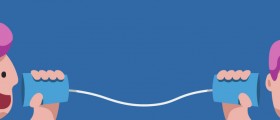
Speech therapy for toddlers
A lot of people do not even know that this type of therapy even exists. There are even people who do know about it but doubt that it can do any good. Probably the most interesting thing about speech therapy is that people who have problems with speaking and are looking into options for speech development almost never consider this type of therapy as their first option.
What is speech therapy?
Types of speech problems
Articulation disordersPeople who suffer from this type of disorder usually have a problem which stems from some secondary physical feature involved in speech. This problem can affect one element or a combination of elements. These are palate, either soft or hard, tongue, jaws, teeth, cheeks or lips. Because of this people have problems when they need to pronounce the words or syllables properly.
Voice or resonance disordersThis disorder does not stem from the secondary physical speech feature but the first, which are the larynx or the voice box. To the person who is listening to someone with this disorder he or she will sound nasally, muffled, either too weak or too loud.
Fluency disordersThis disorder does not occur because of some physical feature. A person with fluency disorder rather clutters the words because he or she is talking way too fast. The other situation is when a person speaks too slow so his or her sentences are full of stoppages, fillers, repetitions or unneeded prolongation.
How is speech therapy provided?

















Your thoughts on this
Loading...